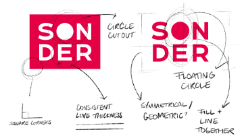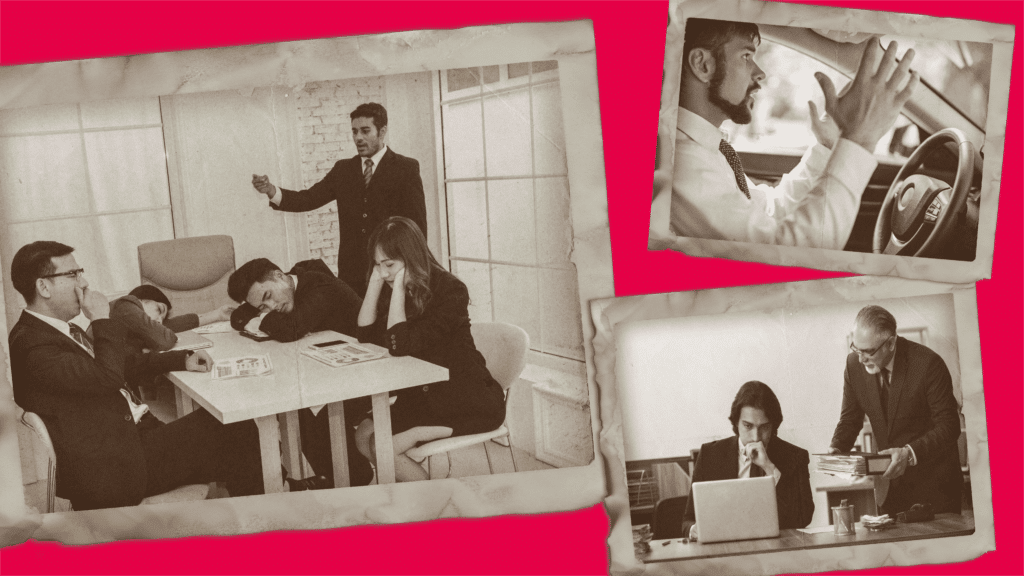It feels like a decade ago, but it must be like a month(?) since the globe converted to a work from home model to combat the spread of coronavirus. There’s been some really positive consequences from it: natural wildlife reclaiming the cities, global Co2 emissions falling, and most importantly, everyone’s realisation that you don’t need to go into an office to lead a productive, professional life. Louder for the people up the back?
You don’t need to go into an office to lead a productive, professional life.
At Sonder, we actually ditched the office late last year. No global pandemic, just a need for a more emotionally-and-time-sustainable lifestyle. Yeah, sometimes it sounds a bit wanky when you hear people talk about burnout but turns out, it’s a real thing. And we were kind of burnt to a crisp.
For us, working remotely was the solution to most of our problems.
First up, the office model is overrated and outdated
Distractions
You know that 2pm moment where one person in the office loses their motivation or focus and kicks off a discussion with the person next to them? And then the discussion gets kind of juicy and one by one headphones leave ears and before you know it everyone in the office has lost their concentration? The worst.
In fact, the case is almost never that one employee’s productivity brings everyone else’s up. But the opposite? That happens all. the. time. Extended lunch breaks, coffee breaks, long chats.
And while it’s nice to hang out with your colleagues, when you consider that you spent nine hours in the office but only six were spent doing work — it makes a pretty good case for the work from home model.
Pointless meetings
Company-wide meetings that last at least an hour but only five minutes will concern you are a godsend when you’ve lost all motivation. But when you’re in your peak productivity time, they’re truly terrible.
Travel
You know what we were saying about nine hours in the office, but only six being productive? Add at least another hour onto your day for travel. And not even in the most convenient time. The worst possible time to travel every, single day.
That Monday – Friday, 9-5 grind
This is the biggest issue with the typical work day and office expectations. I’ve never heard anyone say, “Yeah I’m definitely most creative and productive between the hours of 9am and 5pm and on the days between Monday and Friday.”
Some people really do do their best work under pressure, others work best when the deadline is far, far away from them. Some people work best in the late hours, others in the early hours of the morning. The hours that you’ll work best in are super duper individual to you, and maybe even individual to the task you’re doing.
But it is an adjustment at first.
While working from home seemed to be the solution to many of our problems, it was a huge adjustment at first. For me, the biggest struggle was being scared of wasting time — even though there was so much of it. Why eat breakfast peacefully, when you could work for that half hour? Why take a lunch break when you could finish that hour earlier?
There’s also this weird thing where everyone’s still working vaguely around those typical office hours, but we’re all slightly out of sync. Which is okay, but in those early days of the transition, it still feels like when you get a Slack message asking for a piece of copy, you NEED to get it done now.
The adjustments a business will go through after switching to working from home will be individual to the business and its team. But, most of the adjustment will be learning to communicate effectively with each other, as well as realising it’s all about give and take.
What makes working from home so good?
Work/life balance
Want to get breakfast with a friend? Just start work later. Want to get lunch? Just schedule yourself a longer break. Going to a late dinner? Just have the sleep in.
You know those things that seem really tricky to get done when you work Monday – Friday, 9-5? Like going to the doctor or dentist, grocery shopping, even calling a company to change your card details. You can budget your time for that, by working an extra hour or two on the Monday and get that done Tuesday.
The work/life balance isn’t just amazing for your social life and your sanity, it makes it overall easier to live a productive life.
The other thing?
Having the freedom to live a balanced life means when you do sit down to do your work… you’re in a better headspace. Life feels less busy, less stressful, and easier to manage.
You get to work smarter, not harder
You don’t have to work eight hours a day if you need to. You don’t have to work an even amount of hours across each day of the week. You can work when you want, work on what you want, and do it the way that best suits you.
Writing a 1,000 word blog post — with the image sourcing, the research, the writing, and the proofreading takes me somewhere around three to four hours. But, the research and the writing will always, always, take place in the morning. Why? Because I get into my flow state in the morning, and Afternoon Me is creatively useless.
If I did decide to research and write the blog in the afternoon, I could still do it. But it would probably be more like a six hour task and probably not as good.
In an office environment I had a regular 2-3pm slump. Between 2 or 3pm and 4:30pm, I… didn’t get much done. When I work from home? I usually take a walk around then. When I get home I’m ready to put in another hour or two.
How we’ve optimised work, here from home
Communication
We have a morning meeting every day. Nothing fancy, no presentations prepared. It’s just a quick chat about what we’ll be working on that day, what we might need from one another, or clarifying a point we’ve left on Click Up (we’re getting to that).
Then it’s all about communicating. Putting in the basic effort to say, “Hey, did you see I put a task up for you? No rush on that, just when you have time.” Or even, “Hey, I totally forgot I need this — could you get it done today please.”
It’s a lot better and simpler than assuming they’re across it and then feeling gipped when D-Day comes and you realise you don’t have what you need.
Organisation
So, one of the biggest pluses of working from home and adopting a new routine is that you don’t always have to get on that task straight away. “I’m taking a nap,” is a perfectly fine response. So is not replying (when it’s not urgent).
The key here is to remember that that’s exactly what everyone else gets to do too. So if you’re going to launch something on Friday… Friday morning probably isn’t the time to tell the designer you need a graphic for the launch… now.
You need to think ahead, schedule, and delegate effectively. Give everyone the benefit of the doubt and don’t expect people to drop what they’re doing because you forgot about it.
Organise yourself as well. You should go into the week with a rough idea of what you want to achieve and same with each day. We know that working on one project for eight hours straight is, technically speaking, dumb.
So, if you have an eight hour project to finish that week. Break it up into two hour tasks to achieve throughout the week.
Project Management
When you’re working from home your project management software will become much more important to everyone involved. At Sonder, we’re really fond of ClickUp.
It’s easy for everyone in the team to delegate tasks to one another and it all integrates really nicely. You can see the task on the client’s task board, but the person whose task it is can find it on their personal board, while the person who delegated the task can watch it in their ‘delegated’ pile. It keeps things easy peasy, in summary.
Pomodoro Technique
Want to get shit done really quickly so you have more of that freedom and work/life balance we’ve been talking about? Try the Pomodoro technique. Break up everything you have to do into smaller tasks of around 25 minutes. Then, work for 25 minutes and take a 5 minute break. Once you’ve worked four of the 25 minute rounds, take a bigger break around 15-20 minutes. It keeps you super duper productive within the 25 minutes and gives your brain the rest it needs to continue being productive.


 Don’t delay book a free digital chat today
Don’t delay book a free digital chat today

